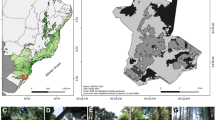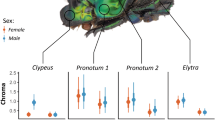Abstract
It has been proposed that the colour of many plant galls evolved as an aposematic signal to protect the contained gall-maker from attack by chewing herbivores. But the evidence would suggest the more likely hypothesis is that the colour is caused by the galler inducing the gall to senesce early, thus releasing nutrients from the dying tissues of the gall to the benefit of the gall-maker. External agents, like chewing herbivores or natural enemies of the gall-maker, may subsequently learn to use these colours as signals.
Similar content being viewed by others
References
Crawford SA, Wilkens S (1996) Ultrastructural aspects of damage to leaves of Eucalyptus camaldulensis by the psyllid Cardiaspina retator. Micron 27:359–366
Inbar M, Izhaki I, Koplovich A, Lupo I, Silanikove N, Glasser T, Gerchman Y, Perevolotsky A, Lev-Yadun S (2010) Why do many galls have conspicuous colors? A new hypothesis. Arthropod Plant Interact 4:1–6
White TCR (1993) The inadequate environment: nitrogen and the abundance of animals. Springer, Heidelberg
White TCR (2009) Plant vigour versus plant stress: a false dichotomy. Oikos 118:807–808
Author information
Authors and Affiliations
Corresponding author
Additional information
Handling Editor: Heikki Hokkanen.
Rights and permissions
About this article
Cite this article
White, T.C.R. Why do many galls have conspicuous colours? An alternative hypothesis revisited. Arthropod-Plant Interactions 4, 149–150 (2010). https://doi.org/10.1007/s11829-010-9096-1
Received:
Accepted:
Published:
Issue Date:
DOI: https://doi.org/10.1007/s11829-010-9096-1




